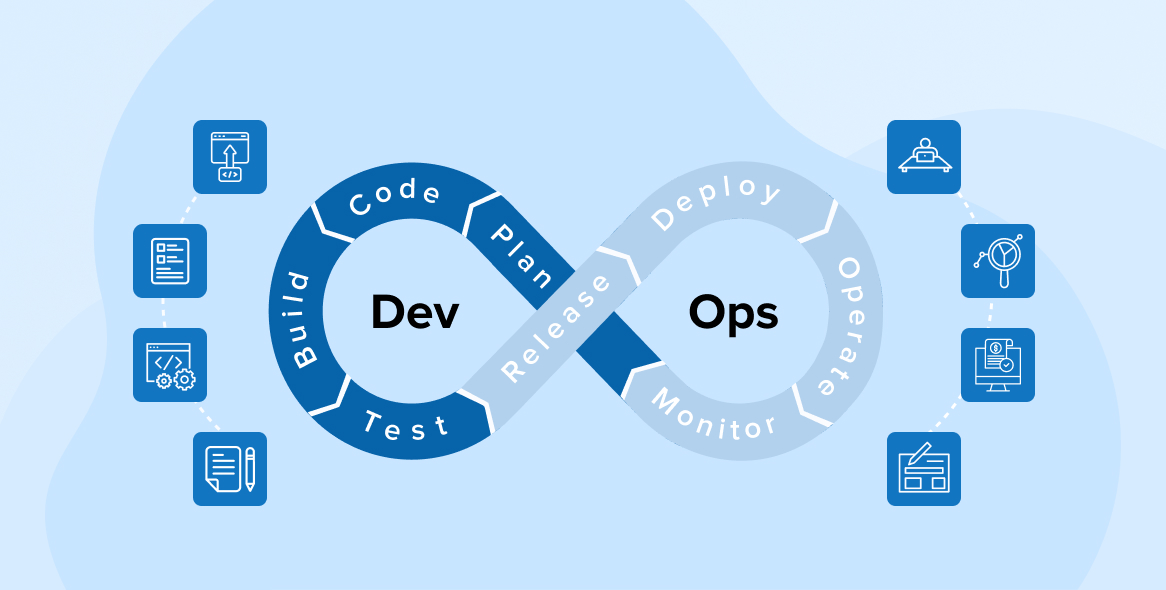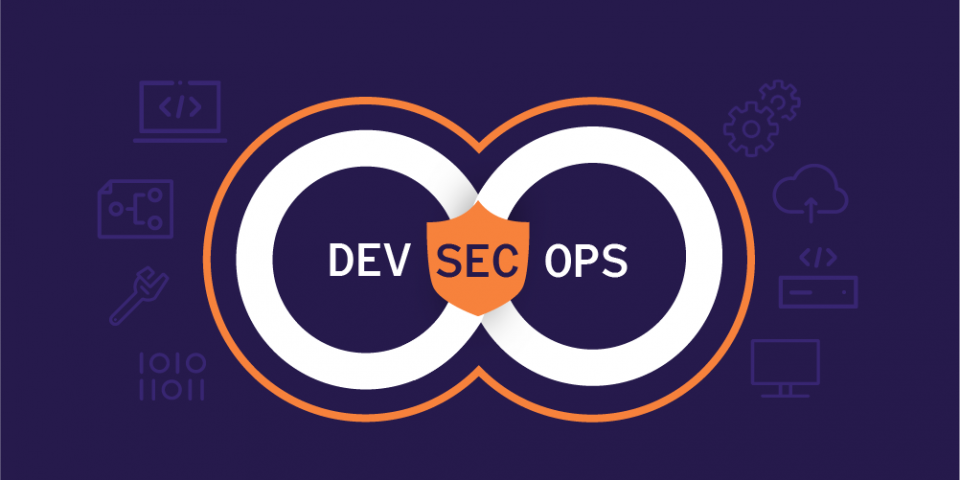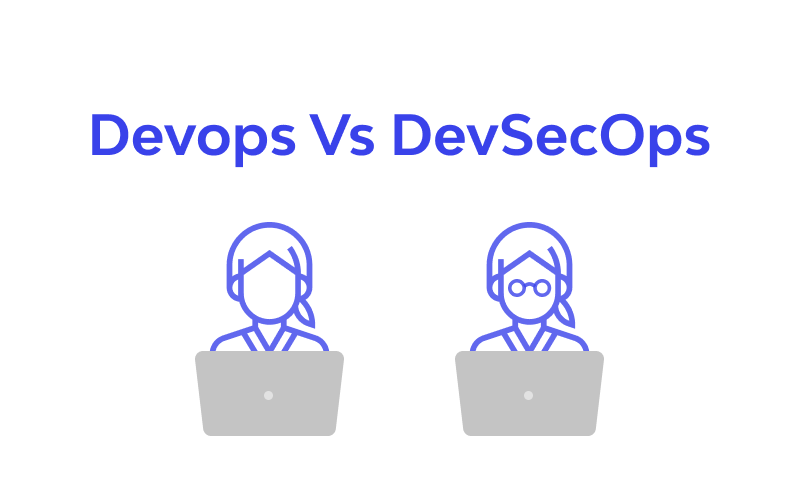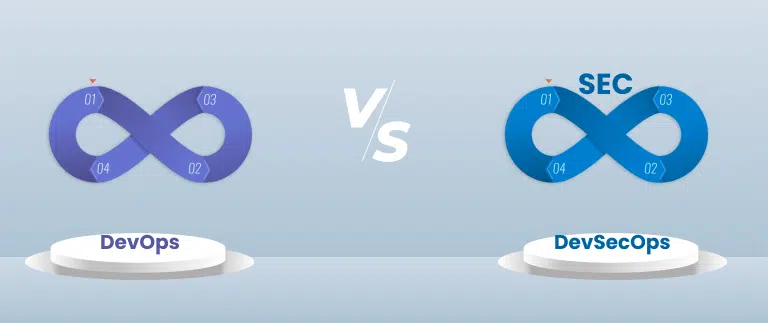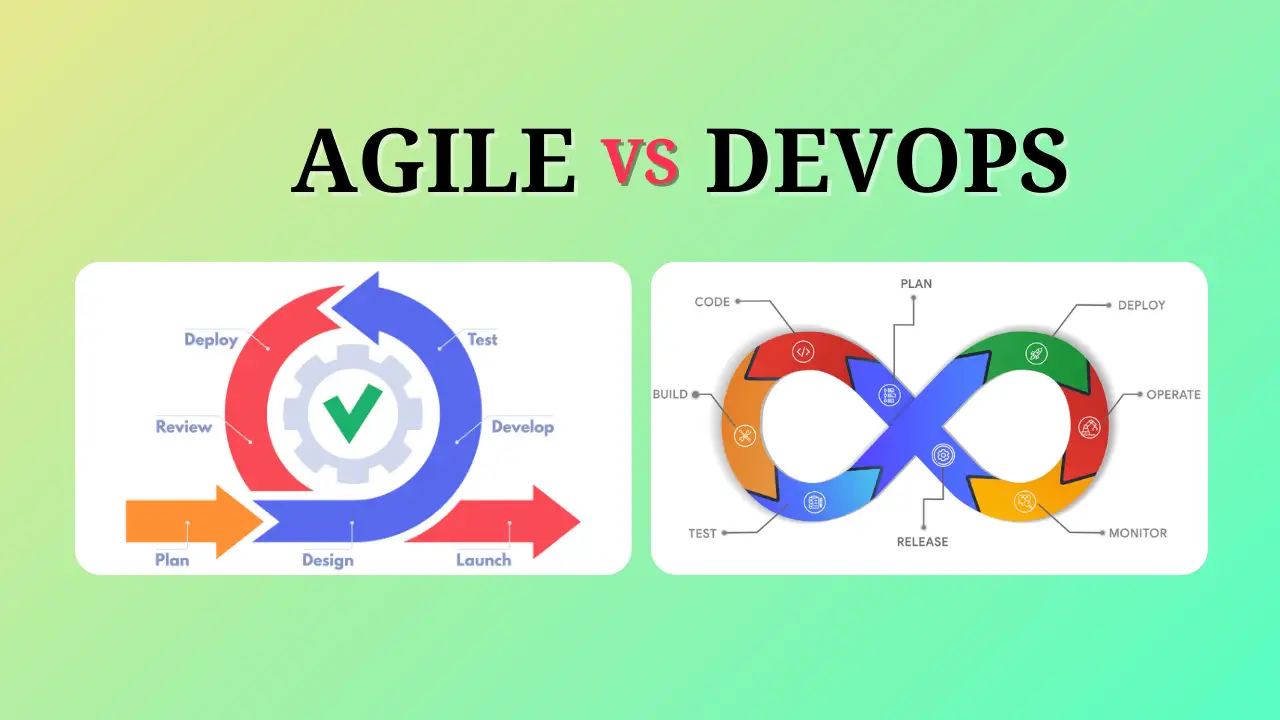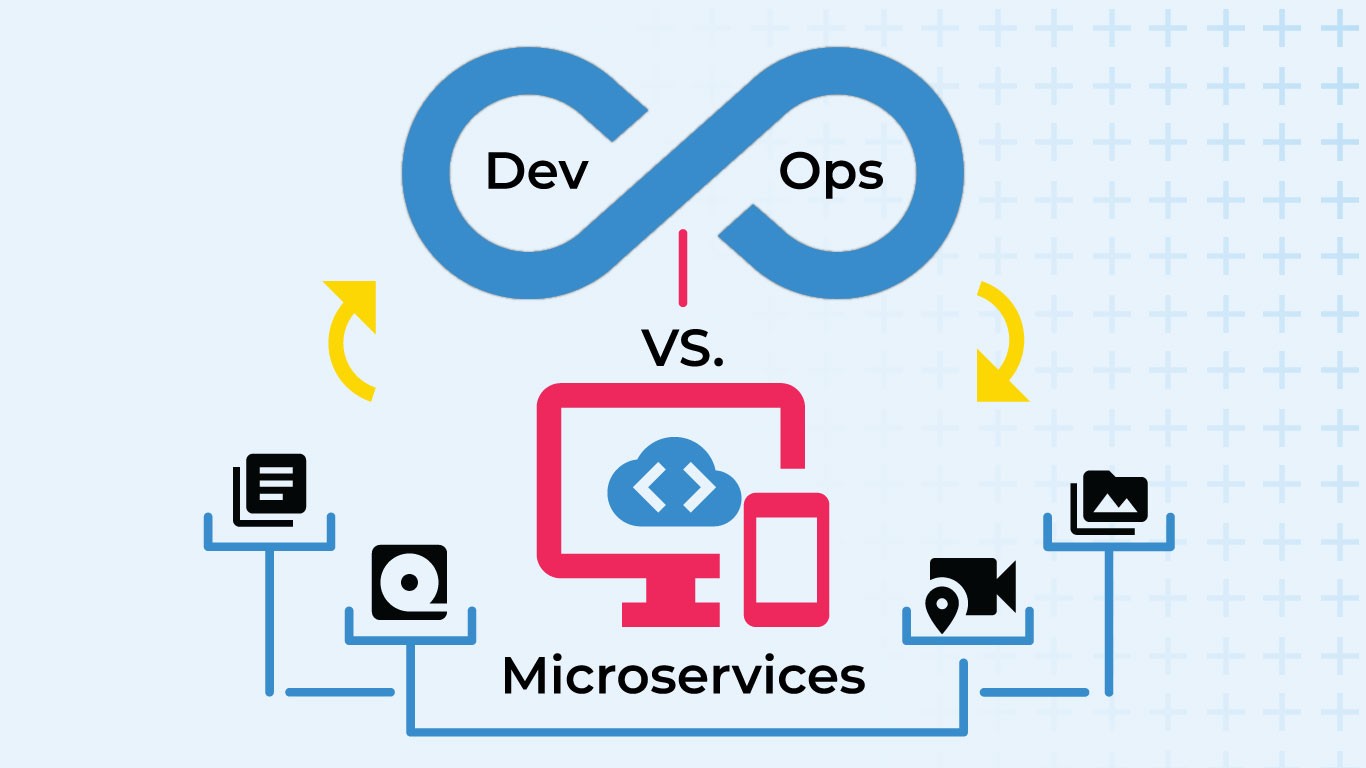The world of software development is brimming with new approaches and methodologies. Two of the hottest topics in recent years are DevOps and DevSecOps. Both offer a wealth of benefits and use cases, but navigating the key differences between DevOps vs DevSecOps can be tricky.
For years, businesses have strived to streamline the software development and deployment process. This quest led to the development of various Software Development Life Cycles (SDLCS) like Waterfall and Agile. While effective, these methods often fall short in today’s fast-paced environment, especially with the rise of cloud-based services. Customer expectations demand quicker turnaround times, and both DevOps and DevSecOps address this need by expediting software delivery.
At the heart of both DevOps and DevSecOps lies the CI/CD pipeline, a loop of continuous integration and continuous deployment. This approach prioritizes frequent, reliable updates with minimal code changes. It essentially integrates the CI/CD pipeline seamlessly into the existing SDLC.
The rapid adoption of DevOps and DevSecOps is undeniable. Statistics indicate that these methodologies now hold a significant share – nearly half – of the software development landscape. However, for many businesses, the choice between DevOps vs DevSecOps remains a puzzle. Understanding the core distinctions between these two approaches is crucial for making an informed decision about which one best suits their needs. This blog aims to provide a clear comparison alongside all the relevant information to empower you to make that choice.
What is DevOps?
DevOps might sound complex, but the core idea is simple. Traditionally, development and operations teams worked in isolation. DevOps breaks down these barriers by bringing them together.
Short for “Development” and “Operations,” DevOps creates a collaborative environment where these teams work in harmony. This combined approach leads to better coordination and faster delivery of value to customers.
DevOps tackles common software development challenges like slow deliveries, communication gaps between teams, and infrequent feature updates. It achieves this by promoting a culture of automation, using tools and processes to streamline development, testing, and deployment.
Think of DevOps as a mindset or a way of working that fosters collaboration between development and IT teams. It creates a smooth flow for developing, testing, and releasing software solutions. By adopting DevOps practices, businesses can establish an efficient development cycle.
What is DevSecOps?
Security is a top priority for businesses today, demanding a more comprehensive approach to software development. DevSecOps addresses this need. It builds upon the foundation of DevOps by integrating security throughout the entire development lifecycle. In essence, DevSecOps takes DevOps a step further by making security an essential part of the framework.
With DevSecOps, security becomes an inseparable element present at every stage of development and deployment. This approach is particularly relevant for cloud-based environments where security and compliance are paramount.
Shared Ground Between DevOps and DevSecOps
Despite their differences, DevOps and DevSecOps share core principles that foster a smoother development process. Here’s a look at these commonalities:
Shared Mindset
Both methodologies emphasize breaking down departmental barriers and fostering a collaborative culture. DevOps promotes closer collaboration between development and operations teams, fostering better communication and streamlined workflows.
Similarly, DevSecOps brings together development, security, and operations, ensuring everyone is on the same page. This collaborative environment reduces bottlenecks and improves overall efficiency. While DevSecOps adds a layer of security focus, both approaches benefit from a shared mindset that prioritizes teamwork.
Automation for Efficiency
Automation, the act of using technology to perform tasks without human intervention, plays a vital role in both DevOps and DevSecOps. It facilitates the creation of a CI/CD pipeline, which enables continuous integration and deployment of software.
Through automation, DevOps can rapidly deploy software updates thanks to an efficient feedback loop connecting development and operations teams. Likewise, DevSecOps leverages automation to minimize human error and establish secure processes. In both cases, automation streamlines workflows and promotes efficiency.
Continuous Monitoring
The software development process is an iterative one, often requiring future modifications or bug fixes. To ensure ongoing functionality, both DevOps and DevSecOps emphasize active monitoring of applications and code.
This monitoring plays a crucial role in both methodologies, allowing teams to identify and address potential issues proactively. However, DevSecOps takes this a step further by actively checking for security vulnerabilities throughout the development lifecycle, ensuring a more robust and secure end product.
Key Differences Between DevOps and DevSecOps
While both DevOps and DevSecOps champion faster software delivery through continuous updates, they diverge in their core focus.
Devops vs Devsecops: Shifting Priorities
Both methodologies prioritize automation for efficiency. However, DevOps primarily aims to streamline the development process itself. It utilizes automated testing to minimize bugs and expedite delivery.
In contrast, DevSecOps prioritizes security. By integrating security measures from the get-go, DevSecOps strives to proactively identify and mitigate vulnerabilities in code, leading to a more secure and robust product.
Devops vs Devsecops: Goals in Mind
DevOps fosters collaboration between development and IT teams. It breaks down silos and fosters communication to improve development speed and overall efficiency. As a result, DevOps facilitates faster software releases while maintaining quality through streamlined development, testing, and deployment cycles.
On the other hand, DevSecOps sets its sights firmly on security. Its primary objective is to prevent potential risks and vulnerabilities from infiltrating the codebase. By integrating security throughout the entire development process, DevSecOps seeks to build secure software from the ground up.
Devops vs Devsecops: Skillsets
The skillsets required also differ. DevOps teams focus on developing and maintaining software solutions. They leverage various tools and methodologies to manage the development process effectively.
DevSecOps teams, however, prioritize software security. They possess a strong understanding of cybersecurity threats and coding practices to identify and address security concerns. Their arsenal includes tools that automate security checks, making it an integral part of the development workflow.
In essence, DevOps teams excel at the technical aspects of software creation, while DevSecOps teams specialize in safeguarding that software throughout its lifecycle.
Devops vs Devsecops: Development Cycle
While both approaches aim for efficient software delivery, DevSecOps prioritizes security throughout the process, leading to a slightly longer development cycle compared to DevOps. This “extra layer of process” in DevSecOps involves integrating security checks at every stage: planning, design, development, testing, deployment, and maintenance. This comprehensive security focus ensures vulnerabilities are identified and addressed proactively.
In contrast, DevOps emphasizes speed and frequent releases. Its development cycle revolves around continuous integration and deployment (CI/CD), streamlining the process but potentially leaving security checks until later stages. This can lead to vulnerabilities being discovered closer to deployment, requiring potential rework and delaying releases.
Devops vs Devsecops: Security
Another key difference lies in when security becomes a factor. DevSecOps emphasizes “baking-in” security from the very beginning of the development process. Security considerations influence design choices, coding practices, and ongoing maintenance. The goal of this proactive strategy is to stop vulnerabilities from ever being introduced.
On the other hand, DevOps often takes a more “bolted-on” security approach. While security checks are still crucial, they might happen later in the development cycle, potentially as a final step before release. While this can still identify vulnerabilities, it may require revisions and delays if issues are discovered at this stage.
In essence, DevSecOps offers a more secure development cycle at the expense of some speed, while DevOps prioritizes swift releases with security checks integrated later in the process. Choosing the right approach depends on your specific needs – prioritizing rapid releases or prioritizing robust security.
Essential Tools and Platforms
Both DevOps and DevSecOps leverage a range of tools to streamline development and deployment. Here’s a breakdown of some key categories:
CI/CD Pipeline Tools
These tools automate the software building, testing, and deployment process, creating a continuous loop (CI/CD) for faster delivery. Popular options include GitLab CI/CD, Jenkins, Travis CI, and CircleCI.
Version Control Systems (VCS)
A VCS acts as a central repository that tracks changes made to code over time. This allows teams to collaborate, revert to previous versions, and maintain a complete history. Subversion and Git are two widely used VCS systems.
Cloud Platforms
Cloud platforms like AWS, Azure, and Google Cloud provide on-demand computing resources and services. They offer scalability, flexibility, and ease of management for development and deployment processes.
APM (Application Performance Monitoring) Tools
These tools monitor the health and performance of applications in the cloud. They help identify and troubleshoot issues proactively, ensuring optimal user experience. Popular choices include New Relic, Dynatrace, and Datadog.
DevSecOps Enhances the Toolkit:
While DevOps utilizes the tools mentioned above, DevSecOps adds another layer of security:
- Security Scanning Tools:
These tools, like SonarQube, Checkmarx, and Snyk, automatically scan code for vulnerabilities and security weaknesses. They help developers identify and address potential security risks early in the development process.
- Penetration Testing Tools:
Tools like OWASP ZAP allow security professionals to simulate cyberattacks and identify exploitable weaknesses in applications. This proactive approach helps strengthen application security.
- Threat Modeling Tools:
These tools guide teams in systematically identifying and analyzing potential threats to an application. This proactive approach helps build security measures from the ground up.
- Compliance Tools:
Compliance tools ensure applications meet industry standards and regulations. They streamline the auditing process and help maintain a secure development environment.
By leveraging this comprehensive toolkit, DevSecOps empowers teams to deliver secure and reliable applications faster.
Exploring Other Methodologies
Having delved into DevOps vs DevSecOps, let’s explore how DevOps interacts with other popular approaches in software development and delivery.
DevOps vs SRE
While DevOps fosters collaboration and automation to streamline the SDLC, Site Reliability Engineering (SRE) takes a more specialized approach to IT operations. SRE leverages software engineering principles to automate manual tasks and simplify administrative burdens. Both aim for efficiency, but SRE focuses on building highly reliable and scalable systems.
Agile vs DevOps
Agile methodologies, often used in software development, employ an iterative approach. Projects are broken down into sprints, allowing for continuous development, review, and deployment in small batches. This fosters adaptability and quicker feedback loops.
Compared to Agile’s focus on development and project management, DevOps emphasizes collaboration between development and operations teams throughout the entire lifecycle, including delivery and maintenance. While Agile excels in iterative development, DevOps brings automation to testing and deployment.
DevOps and Microservices
Microservices architecture breaks down applications into independent, service-based components. This is particularly useful for complex, network-based applications often deployed in cloud environments. DevOps teams can leverage microservices by packaging functionalities as building blocks for larger systems. Additionally, DevOps’ CI/CD practices facilitate the efficient deployment of microservices.
DevOps, DevSecOps, and SecOps
As discussed earlier, DevSecOps integrates security throughout the development lifecycle. But what about SecOps? In simpler terms, SecOps represents the collaborative effort between security and IT operations teams. While DevSecOps embeds security within DevOps practices, SecOps focuses on bridging the gap between security and traditional operations, ensuring ongoing security posture throughout the application lifecycle.
Conclusion
DevSecOps shines when dealing with sensitive data or strict security compliance. In contrast, DevOps emphasizes collaboration between traditionally separate teams to accelerate software development and release cycles.
DevOps fosters a cultural shift that streamlines and speeds up development lifecycles. When security becomes paramount, DevSecOps takes center stage. Many businesses are even transitioning to DevSecOps to meet their evolving security needs.
Ultimately, the “better” approach depends on your specific business needs. Choose the methodology that best aligns with your requirements and integrates seamlessly into your software development lifecycle.
Whether you seek a streamlined development process through DevOps implementation or prioritize integrating security from the very beginning with DevSecOps, we can help. Onextdigital is your ideal tech partner, possessing extensive experience in both DevOps and DevSecOps implementations. Leverage our expertise to streamline your application development and propel your business forward. Let’s discuss your needs – we’re here to help you scale up! Contact us now!





